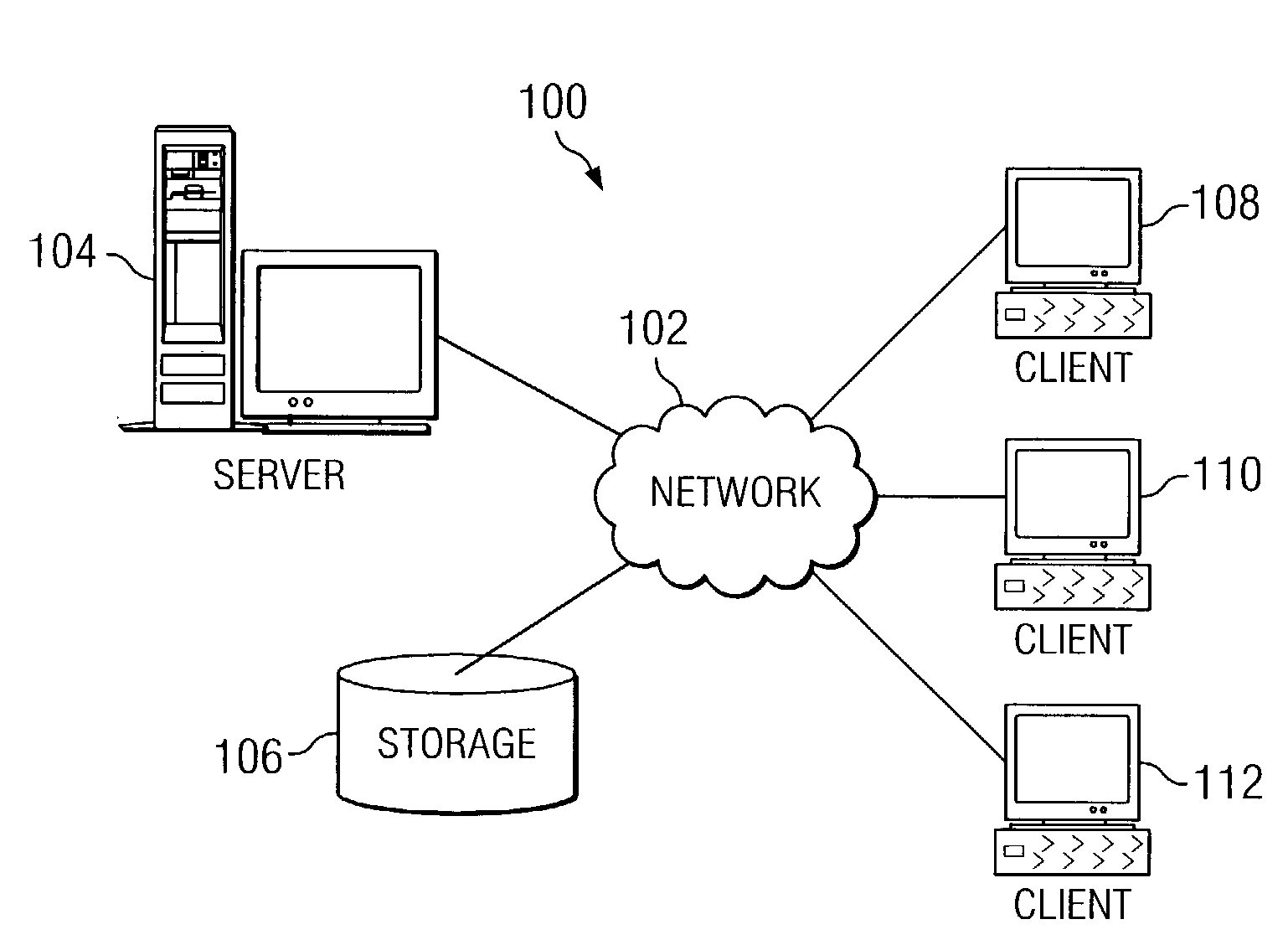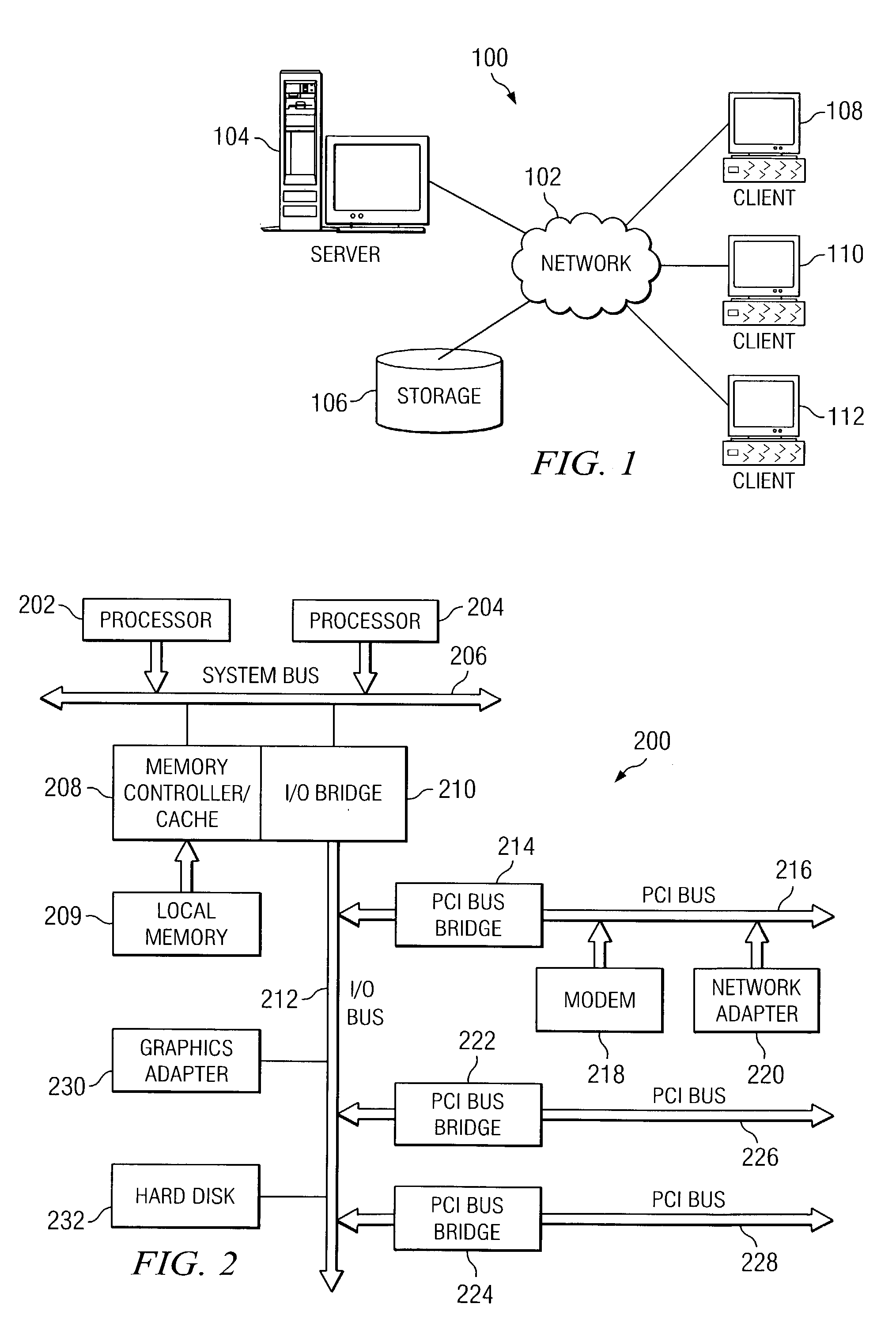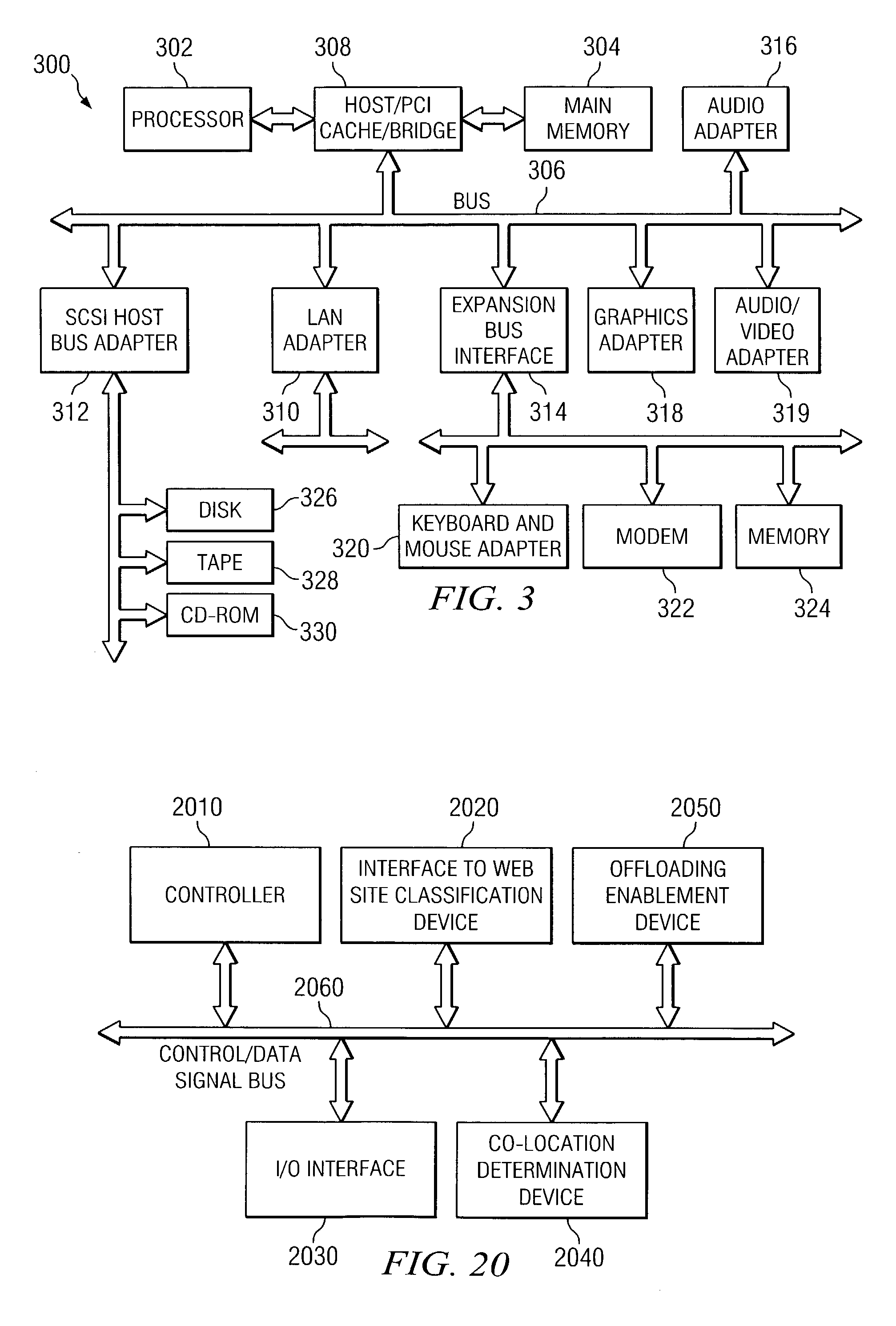Apparatus and methods for co-location and offloading of web site traffic based on traffic pattern recognition
a technology of traffic pattern recognition and applicability, applied in the field of applicability and methods for co-location and offloading web site traffic based on traffic pattern recognition, can solve the problems of difficult and imprecise manual process to identify which web sites should share resources, and the difficulty of resource allocation in order to provide a quality of servi
- Summary
- Abstract
- Description
- Claims
- Application Information
AI Technical Summary
Benefits of technology
Problems solved by technology
Method used
Image
Examples
Embodiment Construction
[0034]The preferred embodiments of the present invention are implemented in a distributed data processing environment in which traffic data is compiled and used to profile, cluster and categorize web sites. Since the present invention is implemented in a distributed data processing environment, a brief description of this environment will first be provided in order to provide a context in which the present invention operates.
[0035]With reference now to the figures, FIG. 1 depicts a pictorial representation of a network of data processing systems in which the present invention may be implemented. Network data processing system 100 is a network of computers in which the present invention may be implemented. Network data processing system 100 contains a network 102, which is the medium used to provide communications links between various devices and computers connected together within network data processing system 100. Network 102 may include connections, such as wire, wireless commun...
PUM
 Login to View More
Login to View More Abstract
Description
Claims
Application Information
 Login to View More
Login to View More - R&D
- Intellectual Property
- Life Sciences
- Materials
- Tech Scout
- Unparalleled Data Quality
- Higher Quality Content
- 60% Fewer Hallucinations
Browse by: Latest US Patents, China's latest patents, Technical Efficacy Thesaurus, Application Domain, Technology Topic, Popular Technical Reports.
© 2025 PatSnap. All rights reserved.Legal|Privacy policy|Modern Slavery Act Transparency Statement|Sitemap|About US| Contact US: help@patsnap.com



